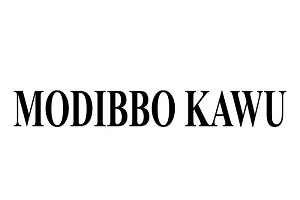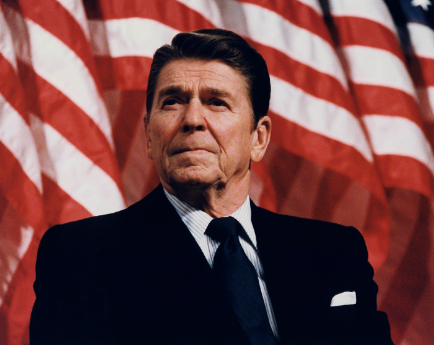Today’s inauguration of George Bush as the 41st president of the United States, closes a stormy chapter in contemporary history. For two 4-year terms, Ronald Reagan occupied the American White House. In these years, the world saw a gladiator, whose self-declared mission, was to “restore American leadership” of the so-called free world, “ make the world safe for democracy” and confront the “Soviet Evil-Empire”.
The backdrop to the emergence of Reaganism, from the point of view of the bellicose forces of American imperialism, were quite clearly unacceptable. There was the apparent “spinelessness” of Jimmy Carter, in the face of the Iranian Revolution, which did not only remove a very loyal quisling, the Shah, but clearly humiliated America, when the radical students took over the American Embassy in Teheran.
The preceding decade was similarly one of deep wounds on the imperialist psyche, and a decade when the world’s peoples were on the ascendancy. It was the decade that saw the humiliating American defeat and consequent evacuation of Vietnam and the whole of Indochina. In Africa, movements of national liberation swept into power in Guinea Bissau, Mozambique, and Angola.
In these battles, the imperialist might, could not turn back the wheels of history. America’s money was put on the wrong horse, as the saying goes.While in the relations with the antagonistic system of socialism a new situation was to emerge, when the Soviet Union and its allies, reached a strategies parity with American imperialism and NATO, from the mid-1970s.
Economically, the situation was also very gloomy. The economic doctrines of Keynes, which had led to the post-war recovery and boom, was to turn to its dialectical opposite of burst. Inflation was the main monster of the crisis which surfaced from the 1970s.
At the end of the Carter years, the American economy was at a low ebb. From 1969 to 1979, the value of the Dollar had fallen from four Deutsche Marks, to less than two. Many of the older industrial enterprises in the United States, such as steel works and textile factories, had been driven out of business by Japanese or other Asian competitors. Unemployment was high and economic activity was sluggish.
Expectedly, the ultra –reactionary, and conservative “think tanks” in the United States, such as the Georgetown University Centre of Strategic and International Studies, the RAND corporation, the Hoover Institute of War, Revolution and Peace, the Heritage foundation and others, were calling for a change of direction. This, at the behest of the most bellicose, most reactionary sections of the military-industrial complex.
The economic doctrine of the so-called Chicago School of Economic Sciences, under Milton Friedman, was also of tremendous importance, in the understanding of the emergence of Reaganism. These scholars, subjected the Keynesian Doctrine to through-going ridicule. They saw a way out of the morass for the imperialist system, only in a concerted neo-classical resort to the rule of the market place, the control of inflation, discipline in economic pursuit, which might need the iron-hand of a strong government. It is indicative, that after the fascist coup of 1973, in Chile, the Pinochet butchers, turned to the Chicago School, to put the Chilean economy in order.
At another level, what was coming to a head, by the 1970s, was the struggle for hegemony, within the circles of the imperialist ruling class, between the financial oligarchies of Wall Street, and the hawks of the so-called California group. This latter group was/is rooted in the production of armaments, and had been on the ascendancy from the 2ndWorld War.
It was within this labyrinth of forces and the historical turn of domestic and international events, that the Reagan phenomenon was created. At the time of his election, Ronald Reagan, already had a track record as Governor of California. The sections of the imperialist ruling class that he represented, knew their man. They can recall the “decisive” manner with which he dealt with dissent, his anti-working class, anti-communist and anti-Soviet positions.
Ronald Reagan, the cowboy, the great orator, the past master in the art of mob psychological manipulation, won the American presidency. He had the backing of the so-called moral majority, the military-industrial complex, the New Right, who emerged from the “think tanks” and all other sections of the conservative coalitions in the U.S.A.
The program he was to implement seemed clear enough.Internally, he was to burst the power of the trade unions-incidentally, one of his first actions was to put in chains, members of the Air Traffic Controllers’ Union, on their way to prison.
So from the perspective of the class-alliance that got him into power, Reagan’s election was in itself, an event of economic significance. The possibility that America might become a more attractive home for their money occurs to those who decide the destination of the vast masses of finance capital. They began to act accordingly. The Dollar, the erstwhile sick currency of international exchange, began to rise against the other currencies, within days of Reagan’s victory. It seems Reagan and the bankers could just as well tango!
As lending to the US government became the fad, banks from different capitalist countries joined the queue.A massive influx of finance capital was engineered. America can forget about raising enough money through taxations to cover expenditure. There was no need to export to pay for imports. American people’s living standards could be raised at the expense of the world and the American economy can thus be stimulated.
For the rest of us, well the international banks have “conquered” the sovereign right to speak in our behalf.This they do, by channeling their surplus funds (this is actually our monies!) into an economy where there was profit over and above the interests charged. Some of these monies went into shares in American companies. These pushed prices on Wall Street to gargantuan heights. But the bulk of these monies went to lending to the U.S. government, which became the biggest debtor in history. By 1987, the United States government ran a deficit of $150 billion. This was inspite of the fact, that one of the Reagan election planks, was the removal of deficits.
Internationally, the attention was to fight the Soviet “evil empire”. As he declared in an address in England, he wanted to “dump Marxism-Leninism on the ash-heap of history”. Ronald Reagan launched a military program designed to achieve superiority over the Soviet Union and the Warsaw Pact.
In this regard, American military spendings which were a “mere” 80 billion dollars in 1968, under President Reagan reached 219 billion dollars in 1982, 292.9 billion in 1985, 313.7 billion in 1986, and over 400 billion by 1988. Scenarios of a “limited” and a “winnable” nuclearwarfare began to be constructed.Another sinister development of the Reagan Presidency was the so-called StrategicDefense Initiative (SDI), better known as STARWARS, which would in essence, mean turning space into a battle ground of the future.
Ronald Reagan, true to his macho-Rambo image, was also determined to roll back the tide of liberation struggles all over the world. Instead, he launched what he called a “democratic revolution”. Stripped of all subterfuge, this meant amply financing bandit outfits in the different parts of the world, beefing up the ultra-reactionary anti people regimes, and sponsoring the removal of progressive regimes in all parts of world.
In the Caribbean and Latin American region, Reagan launched a Caribbean Basin Initiative, which was the carrot he waived at all the regimesthat would tow the Washington line. On the other hand, the remnants of the cut-throat Somoza National Guard, who had been defeated by the Nicaraguan People’s Revolution, became Reagan’s “fighters for democracy”.
The infighting within the New Jewel Movement in Grenada, which culminated in the tragic killing of the charismatic Maurice Bishop, provide the excuse Reagan needed, to behead the Grenada revolution. This was of course an act of brigandage and gun-boat diplomacy, in its most naked expression. Of course, Reagan could beat his chest as an example of America toughness.
Reagan rushed in the marines into Lebanon, bombed the Lebanese people, pulled out his marines in time to allow the massacre of Palestinian refugees in the camps of Sabra and Shattila, as well as supplying the fighter bombers and cluster bombs that rained down death and destruction on heroic Lebanon and its Lebanese and Palestinian defenders, through Israel, in 1982.
Ronald Reagan, the opponent of the Islamic peoples’ anti-imperialism, became the “defender of Islam” in Afghanistan.The feudal Dushman gangs, whose stock in trade included the destruction of schools and mosques, were supplied with everything from Stinger anti-aircraft missiles to billions of dollars, to plant democracy, America-style, in Afghan.
In Africa, the Reagan administration instituted what it terms a “Constructive Engagement” policy for Southern Africa. The line being pursued here, is that South Africa was an ally in the anti-Hitler days. This was a blatant lie. The Nationalist Party in power in South Africa, supported Hitler during the war, and many of its leaders were actually put in preventive detention during the period.
Within the “Constructive Engagement” policy, the independence of Namibea was stalled by Reagan and the apartheid regime for the duration of the Reagan presidency. It was not until the South African military machine was demystified at CuitoCuanavale, in 1988, that any meaningful movement, about the impasse in Namibia, could be recorded. Not to forget his support for the UNITA bandits in Angola-who kill and maim, with American support.
Ronald Reagan turned state terrorism into an art. In an act unparalleled, perhaps in recent history, he sent bombers to Libya, more than 10,000 miles away from America, with instructions to kill the head of another state. In this case, Col. Muammar Gadhafi, during the bombing raid of April 1988. We could go on endlessly about some of the “achievements” sensitive as they are, of the Reagan years.
History moves dialectically. The Reagan years prove this beyond doubts. Was the Reagan who was bent on “pressing the button”, not the same Reagan that would sign a treaty with the Soviet Union, to eliminate a whole class of nuclear weapons? Did he not go to the Soviet Union, and saw the Soviet people, and walk around red square in Moscow?
The Reagan years, were also the years when new concepts of international relationships were emerging out of the restructuring going on in the Soviet Union and its Communist Party. Essentially, the new situation that has arisen, which many people link with the name of Mikhail Gorbachev, exposes the obsolescence of the foreign policy doctrines worked out by the end of the world war. These doctrines reached a head in the bellicosity of mostof the Reagan years.
To sum up. Ronald Reagan will be remembered as the president, who set out on a mission in the interest of a “flabby and greying” imperialism. He restored its fangs,firmed up its muscles, and sharpened its nuclear weapons.Ronald Reagan will be remembered as the president who beefed up the shylocks of the IMF and the World Bank, gave them the coverage to impose the genocidal structural adjustment regimes on the developing countries and the world’s poor.
It is remarkable that even in the United States itself, he deepened the miseries of the poor: Blacks and Chicanos; left one out of even six children below the poverty line, left millions poorer than they ever were, and yet, he would be bowing out of the scene, as perhaps the most popular American president of the century.
Ronald Reagan, the reactionary anti-communist, who many reports say, often boasted of never having read books, a lover of comics, who dotes on “Sesame Street”-type fantasies, many times, asserted that there were many things more important than peace.
He was a determined foe of the people’s aspiration for independence, genuine freedom, and the all-round development of national productive forces. Yet, independent of his will, and in contradiction of his original platform, efforts to sow the seeds of peace were commenced on a world-wide scale.
It is true, that those actions came as a result of the peace offensive of socialism. In itself a confirmation of the fact, that imperialism is not the sole arbiter of world developments. The Reagan years, in the White House, will certainly be remembered in the unfolding events of the turn of the century.


